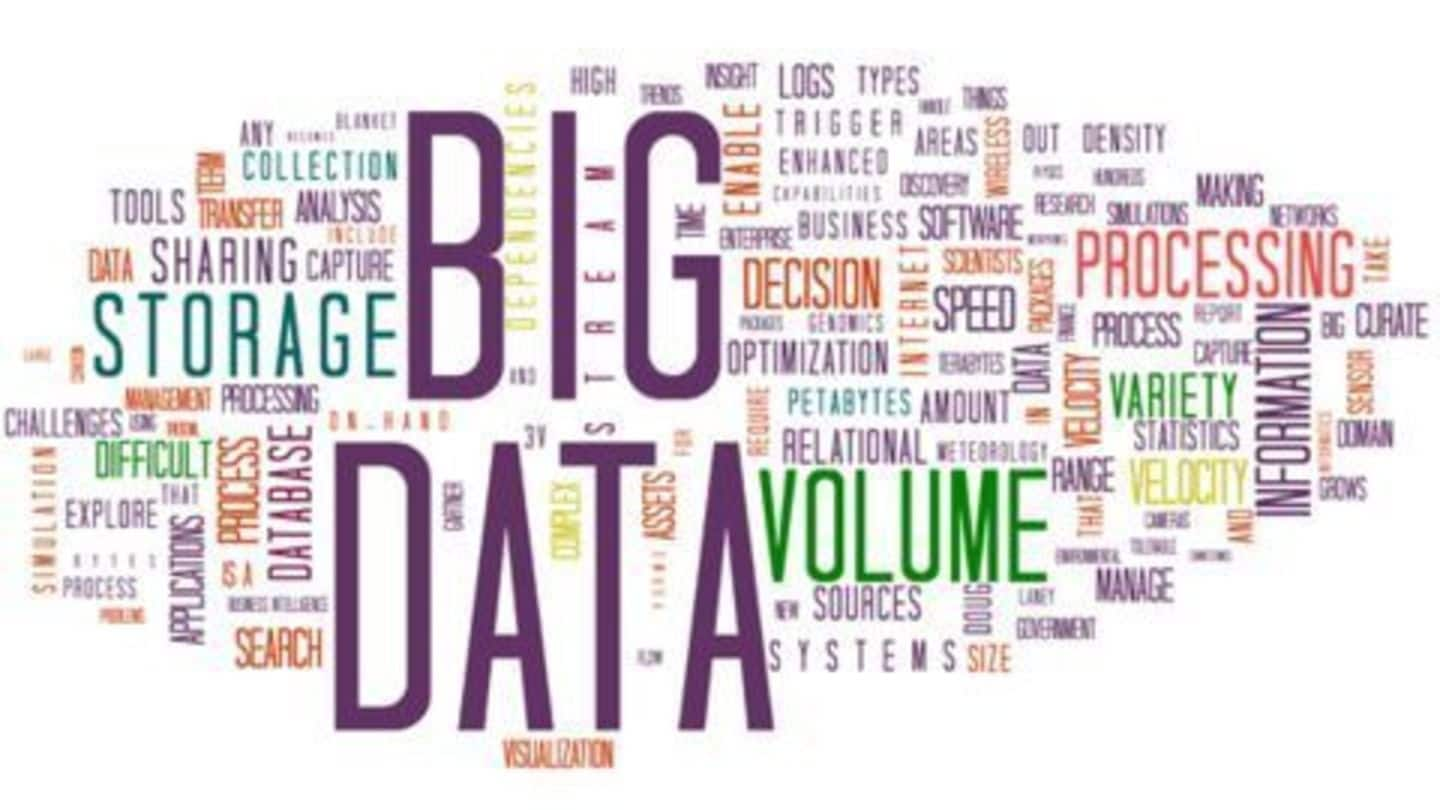
The Kumbh Mela experiment to advance predictive analysis
What's the story
The Netherlands Organisation for Scientific Research (NWO), the Government of India, and two Indian startups - Tarah Technologies and Aarav Unmanned Systems - collected a huge amount of data during the Kumbh Mela 2016 for research purposes.
Their objective is to analyze this "big data" to form predictive models of human behaviour for crowd management systems which can make such large scale events safer.
Big Data
What is 'Big Data'?
Big data refers to structured or unstructured data sets that are too large or complex to be processed by traditional data processing applications.
The concept caught on in the early 2000s.
Such data sets could be analysed to reveal hidden patterns or trends especially with relation to human interactions and behaviour.
Predictive analytics are often used to identify patterns from big data.
Do you know?
The Rate of Data Creation
According to research, every human being on the planet creates 1.7 megabytes of new information per second, and this rate is expected to go on till 2020.
Uses
What are the uses of Big Data?
Big data, most dominantly, is used for understanding and predicting customer behaviour and preferences.
Big data is also used in health care to predict and understand disease patterns.
It has several other uses including science, sports and so on.
Big data is also used by the government to improve law enforcement and security, prevent cyber attacks and so on.
Do you know?
Big Data and its Corporate Use
According to research, if the data accessibility of a Fortune 1000 company increases by 10%, it is likely to earn more than $65 million additional net income.
Major successes
Major Successes of Big Data in History
President Barrack Obama's successful re-election campaign in 2012 was, in part, due to big data analytics which was used to gain a competitive edge.
Similarly, big data also played a role in the BJP's triumph in the 2014 General Elections.
Furthermore, eBay, Amazon, Facebook, and Google, among others, use big data analytics to predict the preferences of their customers.
Do you know?
The Predicted Quantum of Data in 2020
As of 2015, humanity's stockpile of data is estimated to be around 4.4 zettabytes which is around 4.4 trillion terabytes. By 2020, it is expected to grow to 44 zettabytes or 44 trillion terabytes, almost by a factor of 10.